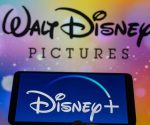Apple looks pretty damn good at 40
Apple Computer Company was founded 40 years ago today, on April Fools’ Day, in Los Altos, California, by Steve Jobs, Steve Wozniak, and Ronald Gerald Wayne.
To celebrate its big four-oh — as Microsoft did last year — the company is flying a commemorative pirate flag at its headquarters, 1 Infinite Loop, in Cupertino, a short drive away from Apple’s place of origin.
Today, Apple Inc. sells much more than just desktop computers. There are laptops, portable music players, smartphones, tablets, set-top boxes, watches, and myriad accessories, like the elegant Apple Pencil. It is reported to be looking into virtual reality headsets and even a car.
Yes, it’s true that Steve Jobs is no longer alive and directing the company as its chief executive. And that may be having an effect. Prominent Apple watchers like Walt Mossberg of Re/code have commented on the decline of software quality as of late. And some people are wondering what will happen to Apple when the company gets to the end of the backlog of products that were developed when Jobs was still around.
Sales of Apple’s iPad is no longer growing the way it was a few years ago, even with the launch of the iPad Pro. Mac sales growth is not what it was, either.
But hey, Apple is now the most valuable company in the world. It had a massive $ 215.7 billion pile of cash and marketable securities as of December 26, according to its most recent earnings statement. That gives Apple a lot of breathing room to get through trouble it may encounter in the future. Chalk it up to Apple’s rough patch in the mid-1990s, when Steve Jobs made his dramatic return to the company he cofounded after stints at NeXT Computer and Pixar.
Apple today plays a commanding role in the world of mobile devices. Its iPhones and iPads running 8-year-old iOS are not as popular as Android phones and tablets, but they generate a great lot of money for application developers. And users upgrade to the latest version of the mobile operating system much more quickly than Android users do. Macs, running 15-year-old OS X, still haven’t become more popular than Windows, but they are without question much more widely used than they were when Jobs introduced the iMac in 1997.
But long ago the company mastered the art of putting on an industry event, and that has continued to this day. People who tune in to Apple events, including journalists, have grown so accustomed to seeing “one more thing” announced toward the end that they now expect other companies to wrap things up with a similar surprise.
And 15-year-old Apple Stores are now well oiled sales machines that have become the envy of other companies. Microsoft’s retail stores bear a striking resemblance to the ones Apple runs.
And Apple’s fierce battle with the FBI over unlocking San Bernardino shooter Syed Rizwan Farook’s iPhone 5c has demonstrated that the company has as much backbone as ever.
The company is no longer trying to disrupt IBM as it was when it unveiled the original Macintosh in 1984.
With its considerable profit margins, Apple now risks disruption by others who can sell cheaper devices and sometimes better software.
In other words, Apple at 40 has a lot to lose.

Above: Apple stock.











Comments are closed.